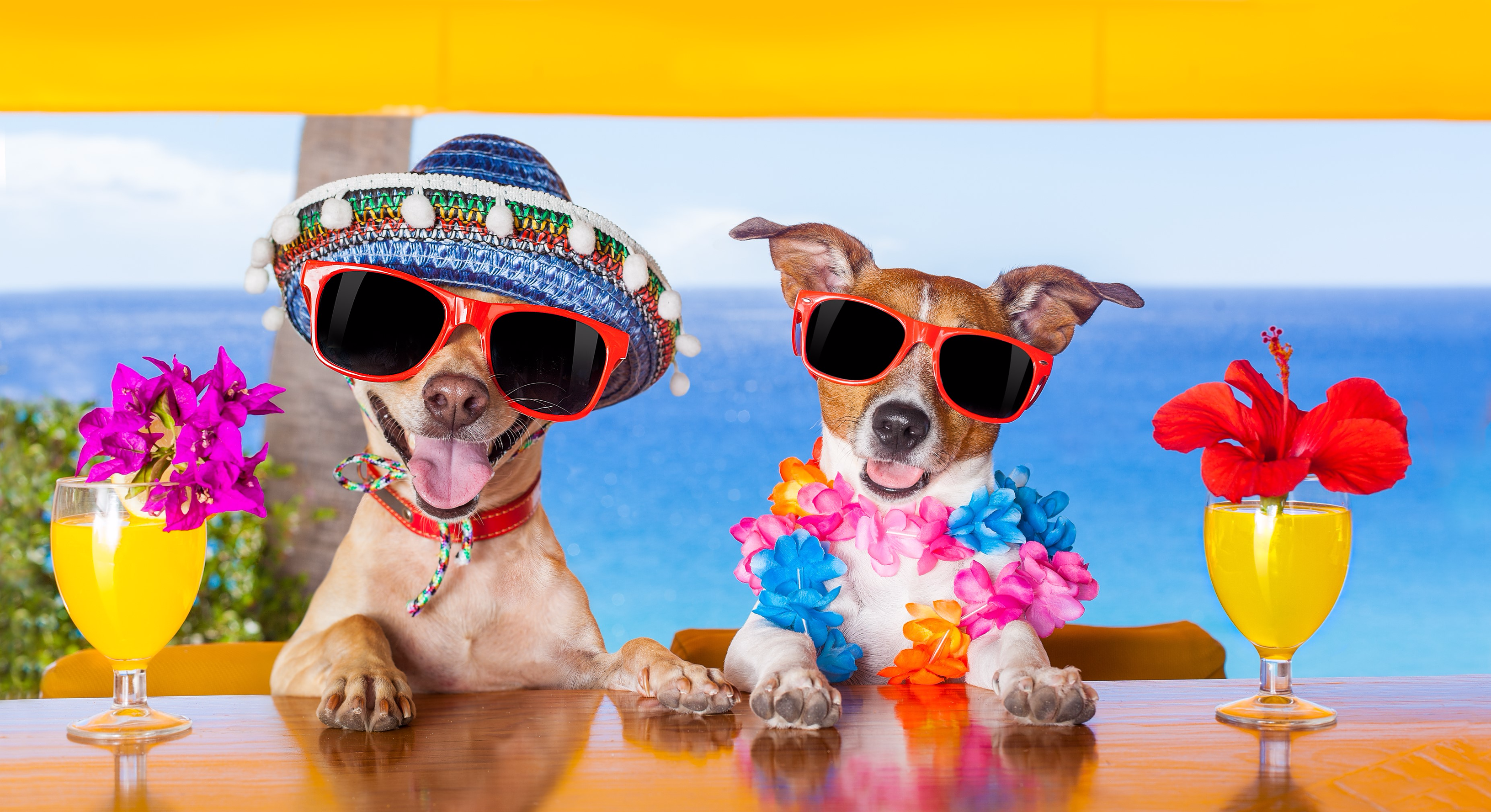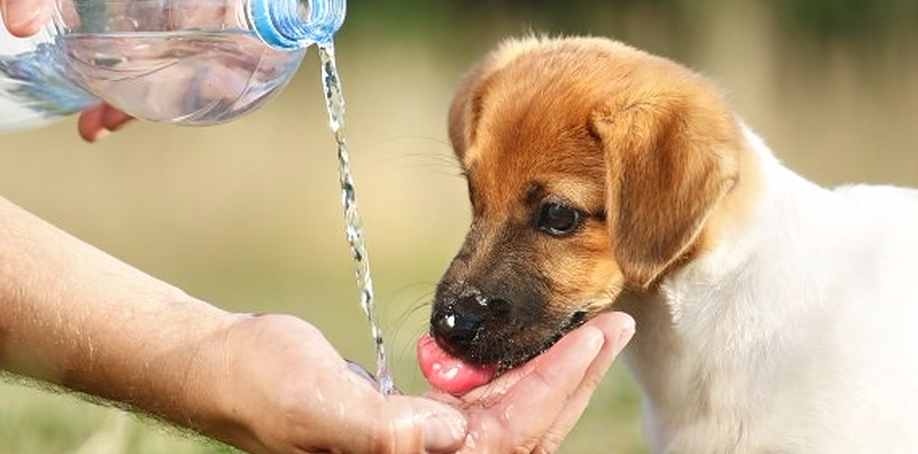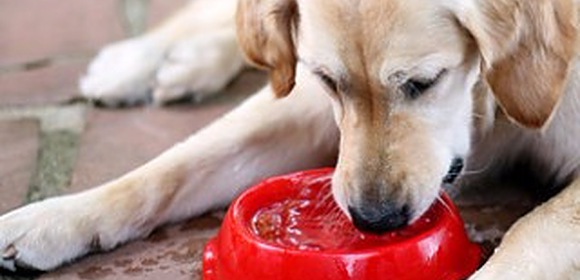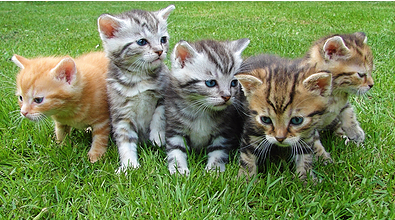Cool Pets Cool are Hydrated & Healthy Pets
Summer's Hot! So, plenty of H2O and a comfortably cool dry place to chill out and stay out of direct UVA/UVB rays are the right mix for a happy, & healthy pet.
Hmmm, Cabin Fever is over. Time for Fun in the Sun. No more pasty white complexions.
Summer is a time for getting out and enjoying warm weather, outdoor sports, get togethers with families and friends, nature walks and hikes and travel adventures. We look forward to outing and we enjoy the longer days under the inviting warmth of the Sun. However, there are dangerous side effects that come along with those enjoyments, and not just for humans, but for our pets as well.
Remember our pets love the Sun but they can also get heat exhaustion or heat stroke if they are exposed to extreme weather changes. Although pets are aware if it gets too hot, they do feel temperature changes differently from us but they are not able to fend for themselves. They can’t turn on the shower to cool off, or open the fridge to get a cool drink, or turn on the fan, or turn up the AC, or take off a layer of clothing, etc. We are their guardians, so we must act to ensure that our pets are comfortable and healthy. f p t w
It's Hot out there. Here’s a few tips to safeguard your pets from the Summer Heat:
Pets don’t sweat in hot weather they pant so that their bodies can maintain a safer temperature. Pets do have built-in mechanisms to help with cooling themselves off, but if left in direct contact with hot weather, even their basic instincts can make it difficult for a pet to cool themselves
Know the details about your pet breed. There are several reasons pets can overheat in hot weather and it some may depend on the type of breed of your pet. Hyperthermia sets in when pets are trapped in an environment that doesn’t allow them to properly cool themselves. A pet in a hot car or even on the beach can drastically overheat. Flat nosed pets who have respiratory system issues like Bulldogs, Pugs, Pekingnese, Persian Cats etc., can find themselves in distress due to difficulty in cooling themselves, and actually can cause further damage that may lead to heat stroke. Older pets, or overweight pets should be kept hydrated and in cool areas away from the heat.
Heat exhaustion symptoms to look for may include excessive panting, difficulty in breathing, heart rate and respiratory rate increase, weakness or mild lethargy,drooling. Severe symptoms may include diarrhea, vomiting or seizures in dogs whose body temperature is over 104F.
Check the weather forecast if the outdoors is set to be hot and penetrating direct sunlight, keep your pet indoors or under cool shade. Pets are instinctual animals and will look for a cool spot to lie on and they themselves will look for ways to be out of the direct sun. Help them find the most comfortable spot, preferably in a cool indoor environment with a bowl of cool water. Don’t keep your pet in outdoor areas that have no shade.
If you like to exercise outdoors with your pet, try to do so when it is cooler, ie., in early morning hours or later in the day when the temperature is lower. Be aware that your pet’s paws will be in direct contact with hot asphalt or sand. Pet’s paws are sensitive, and sometimes dissipate heat through paw sweat. Having your pet walk or run on hot surfaces is unbearable for your pet especially since their paws are the most sensitive areas for “sunburns”. If at all possible have your pet wear protect shoes made especially for pets. If the day’s predicted weather and ozone is going to be at a high don’t take your pet outdoors. Excercising will only increase the likelihood of your pet suffering from heat exhaustion.
Going for a ride in the car? Although many pets love to ride in an automobile, they can overheat very quickly if they are left inside of an auto, even for a few minutes while you run a quick errand, like a pit stop to a store or restaurant. Remember, pets can’t cool themselves by turning on the AC or open windows or open a bottle of water. You may think that by leaving a pet in a car with the windows cracked open as well as bowl of water on the floor of an auto doesn’t safeguard a pet. Pets get distressed when heat exhaustion sets in. They don’t have first aid in mind, they want out of the environment that gives them distress, so DON’T leave your pet in a car, better to leave them home. If you witness a distressed pet left in someone’s auto, get law enforcement help to get the pet emergency care.
Grooming your pet can help, but shaving or close trims can actually be more detrimental than helpful. Remember, your pet’s fur or hair helps them from overheating and can protect them from sunburns and sunstroke. Rather than drastic shortening of their fur or hair, consider a minimal trim. Brushing their coats helps to remove loosened fur and can help them to minimize overheating.
Hydrate your pet frequently. Ensure that they have plenty of H2O. Hydration is the #1 key to help your pet to cool off. Pets dehydrate very quickly, keeping continuous supply of clean cool water in their water bowls especially for those pets who are left outdoors, is a definite must. Some pets won’t take to drinking water if they are out and about in unfamiliar areas, because they may feel anxious. If your pet is anxious and won’t drink, make sure they are hydrated by “hand” feeding them water using a squeeze bottle or medicine dropper. If your pet is panting it will need to rehydrate and replenish fluids and electrolytes in order to maintain a proper body temperature and prevent heat exhaustion or stroke.
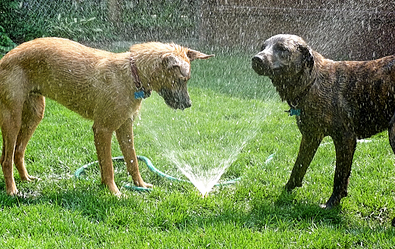
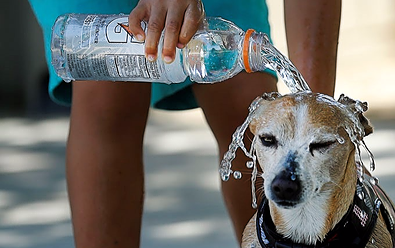
Danger Signs:
Seek medical help right away, if you think your pet is in distress or displays any of the following signs. Here’s a few telltale signs to look for:
1- Excessive Panting
2- Dark or bright red tongue and gums
3- Lethargy or mild weakness
4- Stumbling when in motion
5- Bloody diarrhea
6- Vomiting
7- Seizures
8- Coma
Review and Recap:
Be mindful of your pet and be aware of any distress they may experience. If you suspect your pet is in distress you may provide your pet temporary assistance by submerging it in cool water or sponging or hosing it down with cool water. Try to get your pet to drink if necessary squirt water into its mouth. Seek medical help immediately.
Don't Assume: Even if your pet has cooled down after showing signs of heat exhaustion or heat stroke, DO NOT ASSUME it is fine. Internal organs such as liver, kidneys and brain may have been affected by the abnormally higher body temperature it experienced.
Have a Veterinarian examine your pet to make sure nothing is overlooked and to access any complications that may have occurred.



